Photos: Galaxy Images from NASA's GALEX Space Telescope
Artist's Concept of Galaxy Evolution Explorer

The Galaxy Evolution Explorer was launched on April 28, 2003. Its mission is to study the shape, brightness, size and distance of galaxies across 10 billion years of cosmic history.
Nature vs. Nurture in the Cosmos
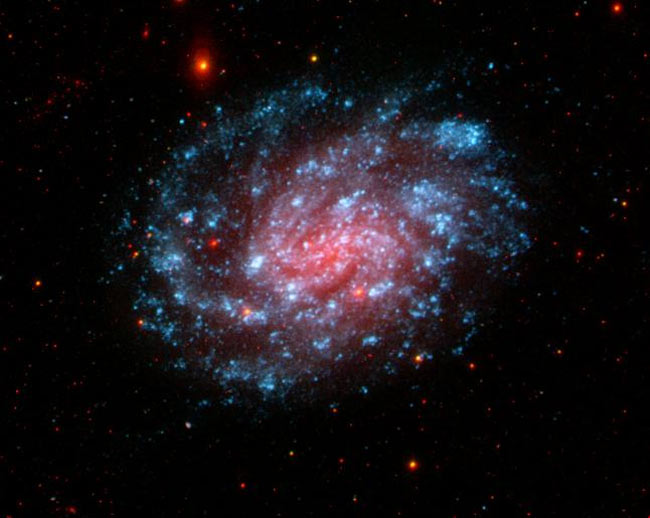
A classic spiral galaxy with open arms and vigorous star formation, the young galaxy NGC 300 is located about seven million light-years away in the constellation Sculptor. Image is from NASA's Galaxy Evolution Explorer.
Comet-like Tail Discovered Behind Speeding Star

A new ultraviolet mosaic from NASA's Galaxy Evolution Explorer shows a speeding star that is leaving an enormous trail of "seeds" for new solar systems. The star, named Mira (pronounced my-rah) after the latin word for "wonderful," is shedding material that will be recycled into new stars, planets and possibly even life as it hurls through our galaxy.
NASA Telescope Makes Surprise Observations

The star GJ 3685A just happened to be in the Galaxy Evolution Explorer's field of view while the telescope was busy observing galaxies. This series of images shows the star flaring in UV light.
Shockingly Large Explosion from Tiny Star System
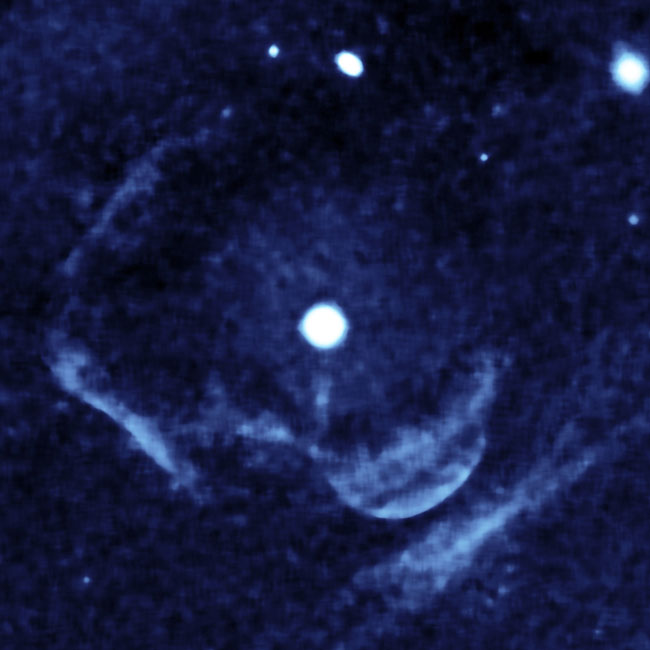
This image, from the far-ultraviolet detector on GALEX, was processed to enhance the appearance of the diffuse emissions from the shell around Z Cam.
Discovery Suggests New Way Galaxies Might Form
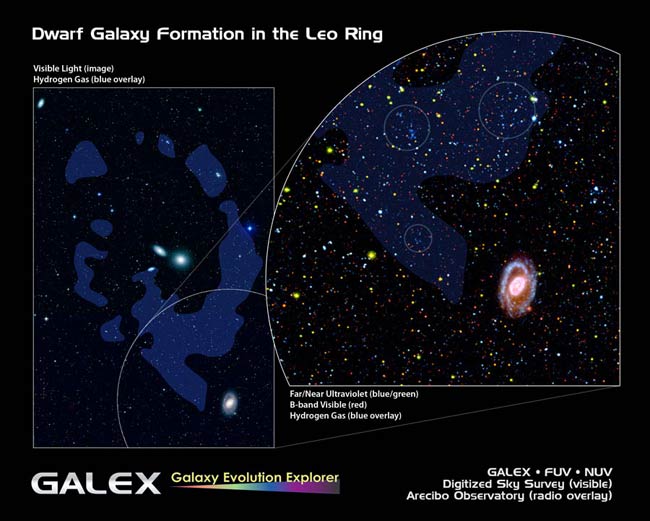
NASA's GALEX observatory spotted dwarf galaxies (in circles) growing inside the Leo Ring of interstellar gas, a region that is invisible to optical telescope but visible to GALEX's ultraviolet-scanning instruments.
Dark Energy - Galaxy Evolution Explorer Findings
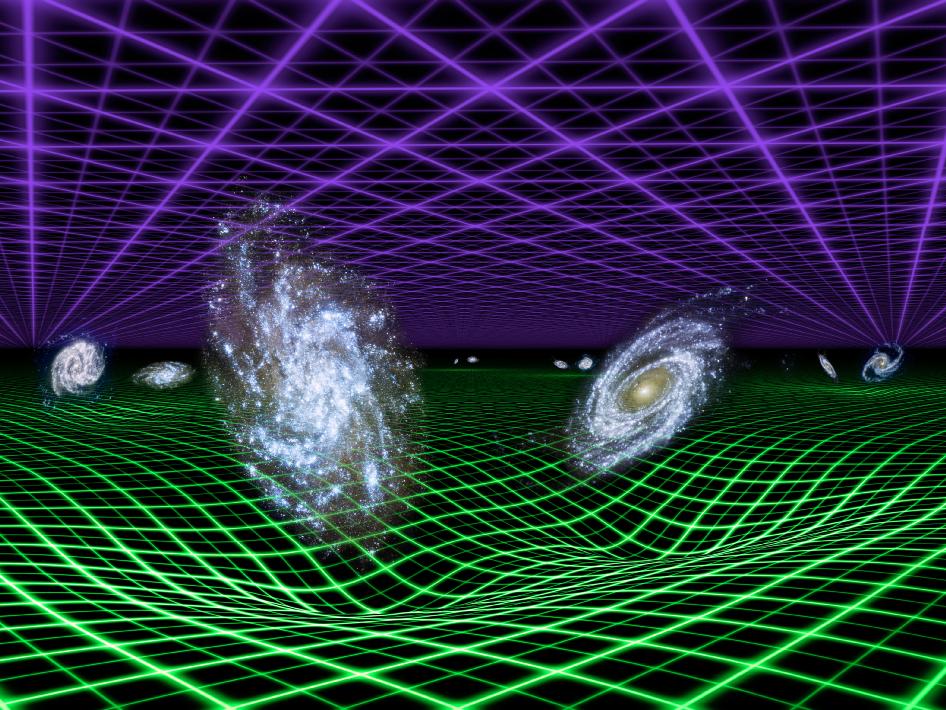
New results from NASA's Galaxy Evolution Explorer and the Anglo-Australian Telescope atop Siding Spring Mountain in Australia confirm that dark energy (represented by purple grid) is a smooth, uniform force that now dominates over the effects of gravity (green grid). The observations follow from careful measurements of the separations between pairs of galaxies (examples of such pairs are illustrated here).
Get the Space.com Newsletter
Breaking space news, the latest updates on rocket launches, skywatching events and more!
Cosmic Grim Reaper Seen For First Time
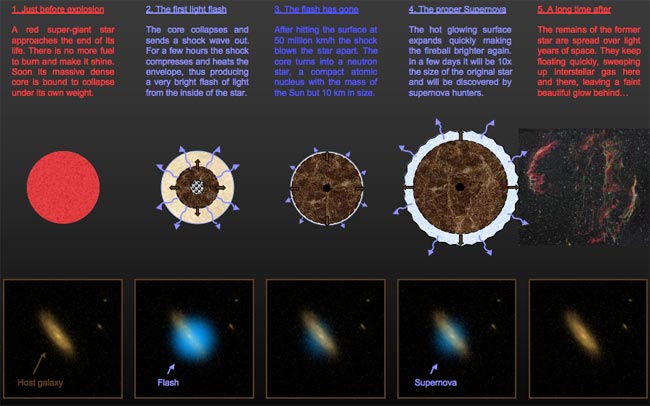
The red supergiant underwent five stages in the life cycle of a star. The yellowish regions represent visible images taken with the Hubble Space Telescope, over which are the blue ultraviolet images taken with GALEX. Since GALEX doesn't have Hubble's spatial resolution, the blue blobs show up as blurry and larger than reality.
Plowing Through the Depths of Space
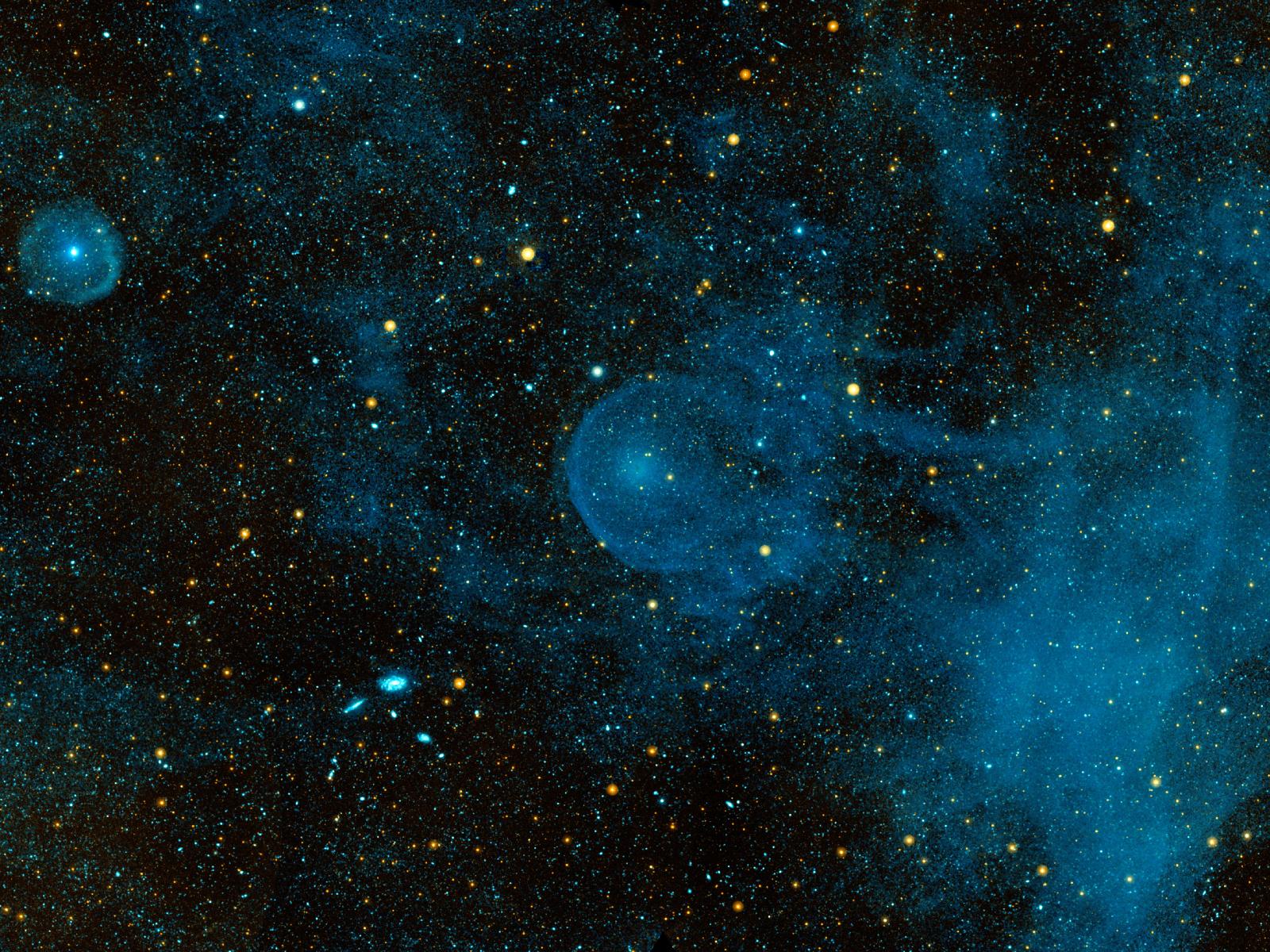
A runaway star, plowing through the depths of space and piling up interstellar material before it, can be seen in this ultraviolet image from NASA’s Galaxy Evolution Explorer. The star, called CW Leo, is hurtling through space at about 204,000 miles per hour (91 kilometers per second), or roughly 265 times the speed of sound on Earth.
Helix Nebula
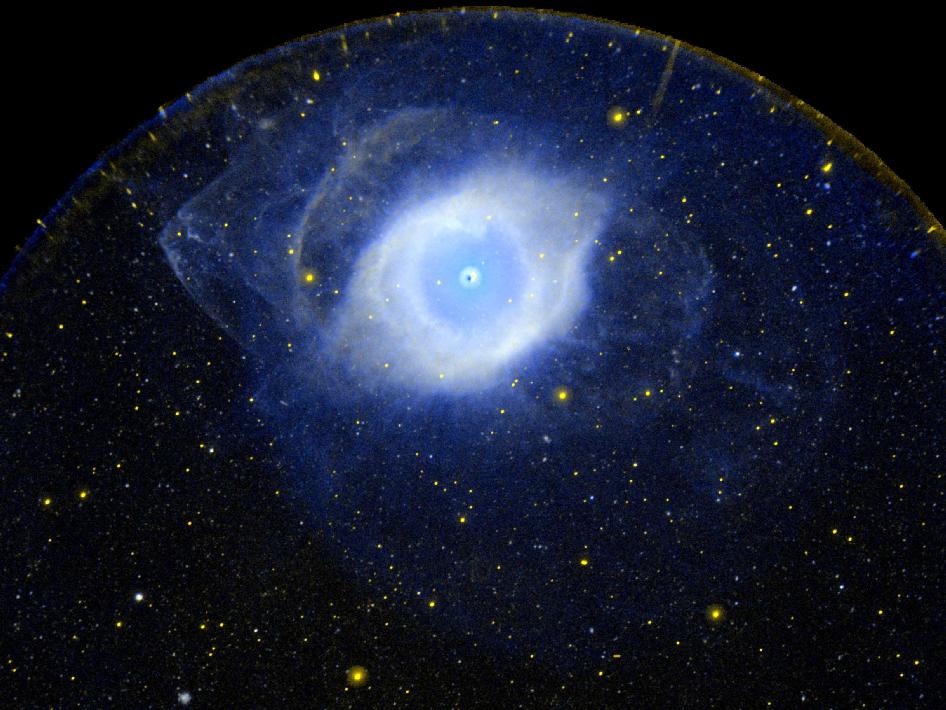
This is the Helix nebula, as seen in ultraviolet light. It is a star like our sun but at the very end of its life. The star is a small dot in the center, surrounded by billowy layers of expelled material. This image was released May 5, 2005.
The Galaxy Next Door

Hot stars burn brightly in this new image from NASA's Galaxy Evolution Explorer, showing the ultraviolet side of a familiar face. At approximately 2.5 million light-years away, the Andromeda galaxy, or M31, is our Milky Way's largest galactic neighbor. The entire galaxy spans 260,000 light-years across—a distance so large, it took 11 different image segments stitched together to produce this view of the galaxy next door.
Join our Space Forums to keep talking space on the latest missions, night sky and more! And if you have a news tip, correction or comment, let us know at: community@space.com.

Tariq is the Editor-in-Chief of Space.com and joined the team in 2001, first as an intern and staff writer, and later as an editor. He covers human spaceflight, exploration and space science, as well as skywatching and entertainment. He became Space.com's Managing Editor in 2009 and Editor-in-Chief in 2019. Before joining Space.com, Tariq was a staff reporter for The Los Angeles Times covering education and city beats in La Habra, Fullerton and Huntington Beach. In October 2022, Tariq received the Harry Kolcum Award for excellence in space reporting from the National Space Club Florida Committee. He is also an Eagle Scout (yes, he has the Space Exploration merit badge) and went to Space Camp four times as a kid and a fifth time as an adult. He has journalism degrees from the University of Southern California and New York University. You can find Tariq at Space.com and as the co-host to the This Week In Space podcast with space historian Rod Pyle on the TWiT network. To see his latest project, you can follow Tariq on Twitter @tariqjmalik.









